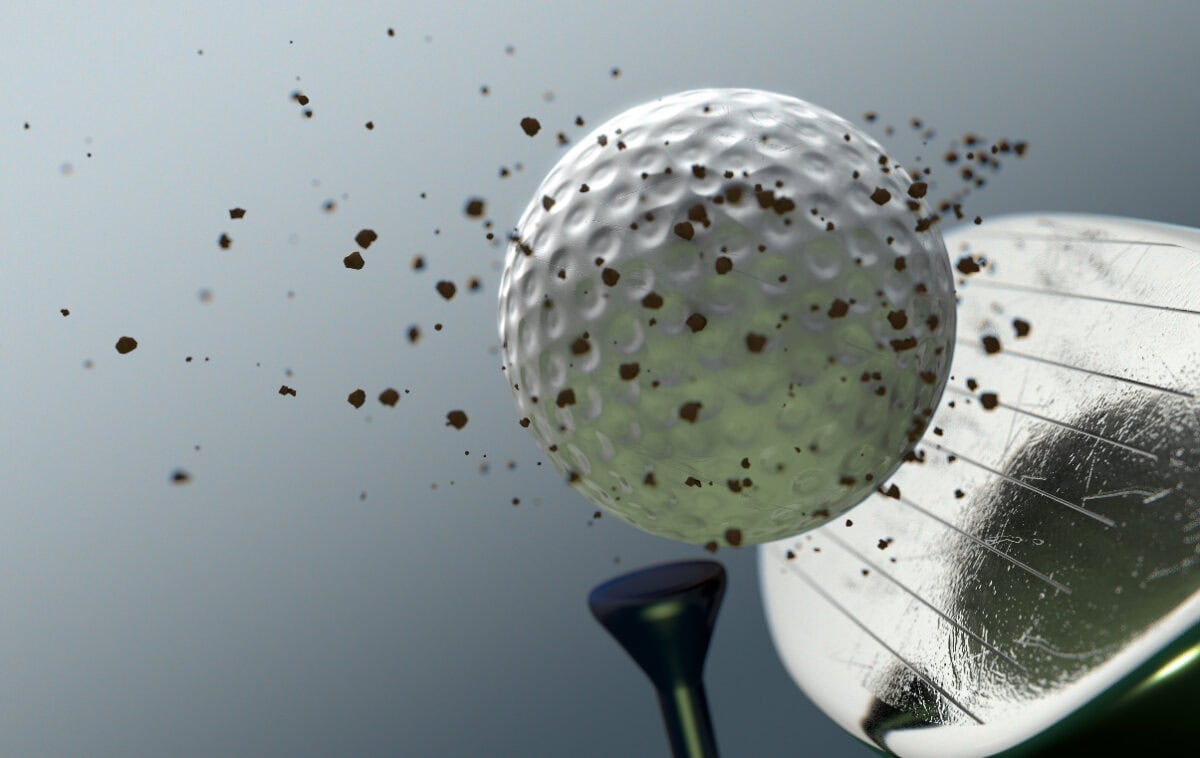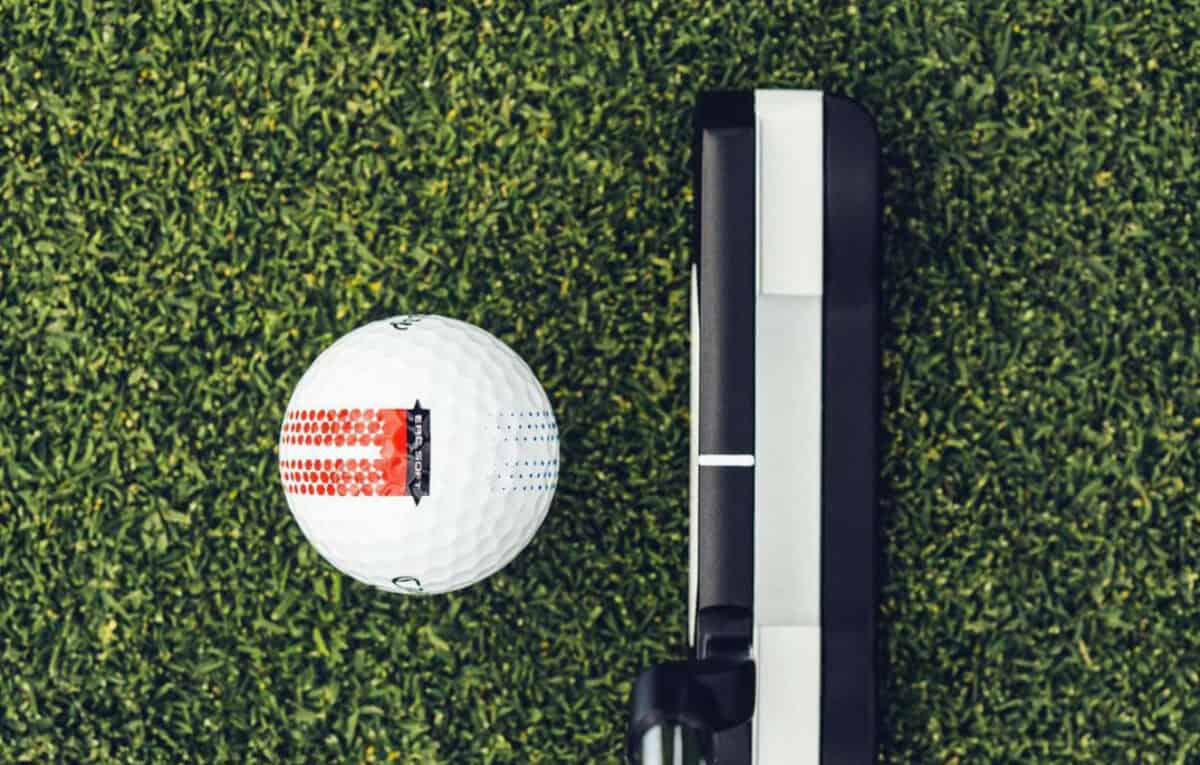Which Golf Balls Generate the Most Spin?
While low spin-off drivers maximize distance, short-game control requires high levels of greenside spin on approach irons, wedges, and chip shots.
For golfers seeking to maximize backspin on scoring shots, certain premium golf ball models and constructions impart significantly more RPMs than others when struck properly.

Measuring Golf Ball Spin Rates
The best method for objectively measuring golf ball backspin rates is using a launch monitor during professional club fitting.
High-speed cameras track cover markings to directly measure RPMs after impact. Spin rates also influence launch angle and descent.
For reference, Tour professionals generate backspin exceeding 10,000 RPMs with a full wedge shot. But maximizing spin requires proper strike and technique.
Wedge Grooves Enhance Spin
Along with golf ball construction, groove design on wedges also impacts spin generation.
Deeper, more textured grooves impart more backspin by gripping cover materials better. Proper re-grooving maintains spin over time.
Steeper Swing Attack Angles Increase Spin
The angle of attack during impact influences backspin. Steeper descent angles naturally impart more backspin than shallow strikes.
Varying trajectories and impact positions modify spin results.
Golf Ball Construction Factors for High Spin
Key golf ball design elements that contribute to maximum backspin include:
- Softer compression cores require less force to flex for a full wedge response.
- Urethane or blended covers grip grooves better than firm surlyn.
- Higher cover tackiness creates friction for more RPMs.
- Lower driver spin optimizes the launch angles required for a spin.
- Added layers and coatings can further boost spin rates.

Golf Balls Generating the Most Spin
Golf ball models achieving the highest spin rates based on independent testing include:
- Titleist Pro V1 Left Dash
- Titleist Pro V1x Left Dash
- Bridgestone TOUR B RXS
- Bridgestone e12 Soft
- Callaway Chrome Soft X
- TaylorMade TP5
- Srixon Z-Star XV
- Callaway Chrome Soft
- Mizuno RB566V
- Wilson Duo Soft+
Titleist Pro V1 Golf Balls
High-swing speed players switching to the Titleist Pro V1 and Pro V1x experience substantial greenside spin jumps over other brands.
The urethane covers specifically grip grooves to maximize backspin on full and partial wedge shots, allowing elite players to attack pins aggressively.
Bridgestone TOUR B Golf Balls
Bridgestone’s TOUR B line utilizes SlipRes urethane covers that increase friction with grooves for added spin and stopping power around greens. The RXS model imparts the most spin of the Bridgestone offerings.
Callaway Chrome Soft Golf Balls
Across testing, the Callaway Chrome Soft and Chrome Soft X models consistently achieve among the highest iron and wedge spin rates thanks to their soft urethane covers maximizing greenside bite and control. The high spin proves popular with skilled players.
TaylorMade TP5 Golf Balls
TaylorMade’s 5-layer TP5 and TP5x balls utilize a firm urethane cover that grips into grooves aggressively at high speeds while preventing excessive driver spin. Tour pros rely on TP5 spin on approach shots.

Premium Balls Outperform Lower Spin Entry Models
While models engineered for beginners focus on distance over spin, multilayer tour balls like Titleist Pro V1/Pro V1x, Bridgestone TOUR B, and Callaway Chrome Soft impart far more spin for skilled players based on design and materials.
Test data proves significant performance differences.
Matching Golf Balls to Swing Speed
Optimizing wedge spin involves selecting balls aligning with your clubhead speeds.
Softer balls with urethane covers work best for slower speeds by compressing more. Faster swings maximize premium balls.
Technique Influences Spin Generation
Proper impact position, angle of attack, centered contact, groove condition, and delivery speed govern spin production along with ball and club engineering.
Even premium balls require an efficient technique to achieve maximum spin.
Just Right Spin Critical for Scoring
While extreme backspin sounds appealing, too much spin can cause ballooning and excessive back up limiting proper release and rollout.
Finding the optimal spin rates for attack angles and consistency gives the best scoring results.
Measure Ball Spin Objectively on Launch Monitor
Rather than assumptions about spin performance, analyzing side-by-side data on a launch monitor provides objective measurements of both backspin and sidespin generated by different ball models with the same lofted clubs. Quantifying spin scientifically verifies the advantages of various balls.
In summary, while many factors impact backspin generation, choosing a premium multi-layer golf ball designed for tour-level wedge spin allows better players’ skilled swings to fully take advantage of backspin potential based on design and construction. Matching ball selection to swing capabilities and precision optimizes spin performance.

